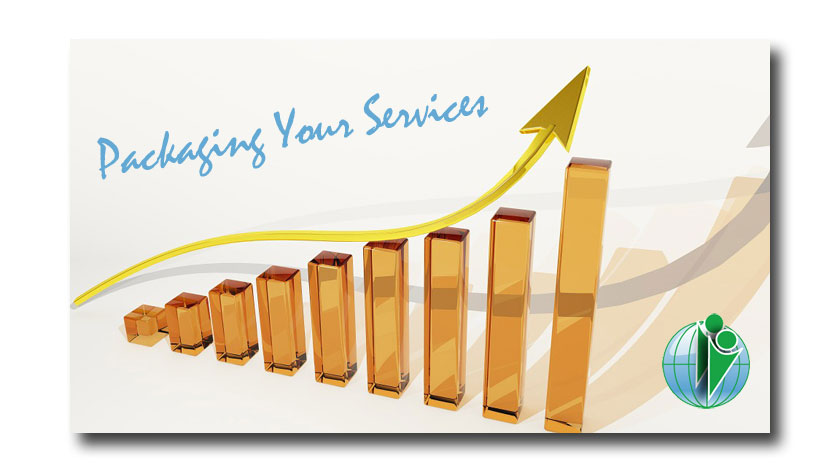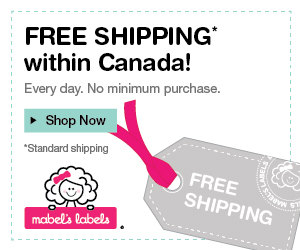How to Create a Profitable Productized Service
This page may contain links to Amazon.com or other sites from which I may receive commission on purchases you make after clicking on such links. Read my full Disclosure Policy

A few years ago, I stopped billing by the hour and began offering service packages to fill different needs. It’s worked really well, leading to reduced stress and increased income for me, and more clarity and easier budgeting for my clients. I highly recommend that you consider this strategy for your business!
You can start by reading this advice from self-employed marketing consultant, Lisa Michaels.

If you’re self-employed and operating a service business, you are probably aware of how hard it can be to expand the number of clients that you provide services to simultaneously because, after all, there is only one of you and you need to spend the time to ensure that each client is taken care of properly.
One way that can help you scale your business without you stretching yourself too thin is to productize your service. Productizing your service helps to clarify and standardize your offerings, making it easier for you to handle larger number of satisfied clients at the same time.
Here are some steps to take in creating a product out of the services that you provide:
Identify Recurring Problems
The common issue a lot of service businesses face is their tendency to follow a typical freelancer model. They negotiate a project with a prospective client, who asks them to include something they typically wouldn’t, but they end up giving in to their requests for fear of losing them. Even when the proposal is accepted and they’ve set the parameters for a contract, they somehow end up with floating requirements or requirements that go beyond the services that they normally provide, because – once again – they’ll do anything to satisfy their client’s needs. This pattern results in every project taken being customized, where service providers get stuck doing too much work to keep an eye on expansion because none of their customers have the same type of contract.
Make your workload easier by identifying the recurring requests your clients have and build those into your list of product offerings as a service. Anything outside of those parameters, you simply don’t do.
Clearly Define Your Service
After you have developed an understanding of the types of services that you want to move forward with, defining your service clearly is another important ingredient when productizing that service. It helps to take some time to conduct market research before finalizing your decision. It will give you a chance to test your business idea before you can commit to it more thoroughly and abandon your previous approach.
Your definition should include some limits or finite scope statements that facilitate understanding on the part of the client. It is also a good idea to simplify this menu of services by putting them into logical suites or packages. You can extend your basic services by creating other packages, containing special offers that augment these basic offerings. That way, when you work with a client, you can merely show them a menu that contains all of your services that they can select from.
Defining your services through this format puts you on the cusp of being able to tie these productized services to metrics that allow you to manage them much more easily. ROI figures, your own billing experience, and your estimating skills are all options that you can use to make this work. Once you get started on this path, it should give you more time to expand and focus on other parts of your business that can broaden your company and enrich your work day at the same time.
Turn Work Hours to Packages
Until now, you’ve probably charged for your services by the hour. With the new approach, the initial focus should be on creating a standardized pricing scheme that you can apply to each service that you provide. When you blend different productized services together in a package or bundle, you can also create incentive for your clients by lowering some prices just as a cable television provider would with their phone and Internet services.
While you are creating your pricing, it is a very good time to review how you will perform your services for your client. Many large firms perfect a process or service over time and then document it completely so that it can be handed off to an outsourcing company to perform. If you have that type of confidence in a particular process, once you create a price range for it, you can start to compare it with hiring someone or using someone else’s service to fulfill that responsibility. By the time you are finished with putting prices on your productized services, you will likely be able to determine which services you can outsource if the demand gets too high while you expand.
Set a Fixed Price
You may be used to creating custom quotations from requirements gained through meetings with your client. But when you commit to productizing your services, a fixed price up front will allow you to appeal to a lot more potential customers.
Consider the existing market pricing for the type of services you offer to determine the level of fixed pricing you should apply to each productized service. You can also use a method like the premium pricing approach, in which you focus on maximizing the price on certain productized services that have the largest validated need for your expertise.
Normalize Revenue Streams
Now that your product menu is ready, your next step is to talk to your clients about accepting a subscription type of plan for each product that they want.
Subscriptions are a good way to normalize revenue streams and can take a lot of the pressure and expense away from continually having to sell services each month. With a base amount of income each month already known because of subscriptions, you should be able to concentrate your sales efforts on reaching new clients.
Conclusion
As with any structural change to your business, you can opt to phase in productization so that you can study the effects that it has on some of your more popular services before committing to convert the rest of them. Structurally, it will create more space and time for you to focus on other parts of your business. But you may also want to integrate detailed feedback from your clients as a means of fine-tuning your pricing and product offerings before moving ahead with full-scale implementation.
Image courtesy of pixabay.com, licensed under CC0 Public Domain











I hear a lot about this idea, and I can see ways this could work very effectively. It can be difficult for me to assess the speed at which someone will work until I’ve been with him or her, but there are some services I provide which could be priced as a package.
Yes, when you’re working alongside the client, their work style and decision-making process are definitely important factors. But try it for the services where it would work – you may even find a way to expand it into your other services later on.
Thank you so much for posting this article. I really like the information. Organizers seem to not like making packages for the reasons that Seana posted. I have 2 packages but I can see that I should look at the idea again.
Let me know how you make out!
This is great! You have given me a lot to think about. I’ve always wanted to do this but it never worked out. I would love to do this for my small business services, maybe that will be an easier fit. Thanks for sharing.
Change is difficult and requires a lot of time and energy. Start small – take one service (or part of the service) and test the waters. You can always modify it along the way, until it’s satisfying. Think of it as a prototype. The initial effort might be well worth the trouble in the long run.
Sabrina, what I did was create packages and start offering them to new clients. Next I transitioned my infrequent clients to the new packages. I still have a handful of clients that are still on their originally hourly packages because it’s working well for both of us.
Lisa, thanks so much for this excellent post!
Thank you, Janet for publishing it! 🙂
Thank you for sharing these tips, I would love to do this for my small business, maybe this will make my life easier.